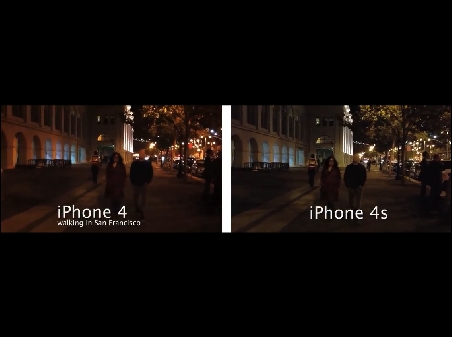- iOS 5 Features
- Resolution
- Image Stabilization
- Temporal Noise Reduction
Temporal Noise Reduction
Before you can understand the temporal noise reduction feature, you need to understand visual noise, which is the variation of color and brightness that can show up in an image despite the fact that it's not present on the actual subject or scene. The cause of visual noise is most often the sensor that transmits the analog light information to the digital image. Noise (often called grain) commonly shows up on images when the ISO or gain is boosted to add light in low-light shooting conditions. Temporal noise reduction assesses image data in each frame, looking for flat areas of color (the actual scene) that have random images superimposed (the noise) and leveling off those extra colors to approach the more natural version.
Ideally, this feature makes your iPhone 4S video camera a better low-light shooter than the iPhone 4, but I was less than impressed with the temporal noise reduction feature in my side-by-side shooting tests. However, that might well be because I was so busy "ooh"-ing and "aah"-ing about the increased resolution and motion stabilization. I'll have to compare more side-by-side tests before I can render a final opinion. In the meantime, check out the low-light shooting in Video 4 and see what you think.

You need to upgrade your Flash Player. You need version 9 or above to view this video. You may download it here. You may also see this message if you have JavaScript turned off. If this is the case, please enable JavaScript and reload the page.
These clips were shot on an iPhone 4 and iPhone 4S to test the handling of low-light shooting with noise reduction. When the same color-correction filter was applied on both clips, lots of noise showed up on the iPhone 4 version that didn't show up on the iPhone 4S version. However, that's not a reflection of the native clip, but rather an affected one, so there's more going on than simply the built-in noise reduction of the camera. For example, the increased resolution of the iPhone 4S clip changes how the effect appears.
Though I have yet to find the glory in the temporal noise reduction (but I'll keep looking), the other features of the iPhone 4S and iOS 5 continue to make shooting good video on your handiest camera even easier. All in all, the new iPhone 4S and iOS 5 have made certain that the camera stays just slightly ahead of the curve—more easy to use, and more likely to give you excellent video quality. I'm a big proponent of always having a camera available, and as the camera that's constantly on you continually improves, so will the videos that you can show off.